Need to find your vehicle’s recommended tire pressure and not sure where to start? Here’s everything you need to know!
While they may not look like much at first glance, your vehicle’s tires are actually crucial, both from a financial and safety point of view, and keeping them properly inflated is also vital. Luckily, it’s also one of the easiest, most cost-effective ways to care for your tire and make sure they last you as long as possible.
Indeed, driving on under or over-inflated tires will not only cause them to wear out unevenly, and require them to be replaced much faster, but will also cause various troubles in the short to medium term. For example, the exterior of the tires on your car or truck will wear out quicker if they are underinflated and reduce fuel efficiency.
Similarly, over-inflated tires will wear out faster in the center and are more susceptible to damage from road surfaces, resulting in a bumpier ride and more frequent tire replacement too.
Long story short, making sure the tires on your car or truck are inflated according to the manufacturer’s specifications is really a win/win situation. Your tires will last longer, you’ll save on gas, your vehicle will be easier to handle, and it will also brake faster — what’s not to like
But how can you do that? This is what we’ll find out below.
Where to Find the Recommended Tire Pressure for Your Car or Truck?
Put simply, the correct tire pressure for most modern vehicles may be found on a sticker located inside the driver’s door. However, if you drive a classic, it might not be there, or the sticker might have been damaged/removed over the years. If this is youse, your best bet is always to get hold of your car or truck repair manual. You’ll find everything you need to know regarding the recommended tire pressure for your specific model in the “Maintenance” or “Tire Specifications” chapter.
Of course, it’s important to mention that depending on the model you drive, the recommended tire pressure may be different between the front and rear tires and whether the vehicle is fully loaded or not — still, it’s a lot more frequent on pickup trucks and high-end sportscars than regular cars.
It’s also essential to keep in mind that your car or truck’s manufacturer determines the recommended tire psi for a particular model by taking a wide range of variables into consideration and after running hundreds of tests and computations. In most cases, and unless you plan to go drag racing with your modified Mustang or install much bigger tires on your mean off-roading machine, you should probably not unilaterally decide that a different air pressure could be better. Sticking to what the manufacturer recommends is usually the safest move.
How to Check and Adjust Tire Pressure?
As said above, a good thing about tire air pressure is that it’s really simple to take care of and you can check and adjust it with very simple tools. Indeed, all you need to check and adjust your car’s tire pressure at home is:
- A tire gauge (digital or analog)
- An air compressor
- A notepad or your phone
Step 1: Only Check the Pressure When the Tires are Cold
Because air pressure varies significantly with temperature, the manufacturer’s recommended tire pressure is always for cold tires. Hence, you should always measure your tires’ pressure when they are cold. As a result, only check the tire pressure after leaving your car parked overnight.
(Of course, this is really only necessary in an ideal scenario. If you notice one of your tires is significantly under-inflated while you are on the road, it would still be better to adjust the air pressure right away than to keep driving on a half-flat tire — you can always recheck and readjust the air pressure the next morning.)
Step 2: Use a Gauge to Check the Tire Pressure
No need to mention that there is no such thing as “eyeballing” the air pressure in your tires. Tires from different suppliers may be designed differently and have a different profile when inflated at the same psi. It’s impossible to just look at the tires, kick them, or anything else you might have heard your uncle mention last Christmas.
Luckily, checking the air pressure in your tires is quite straightforward. First, remove the valve cap and press the tire gauge firmly against the valve stem until the hissing stops. As long as the gauge is correctly linked to the tire, you should see an accurate reading.
Step 3: Make a List of the Readings
Note the tire pressure of each tire and compare it with the manufacturer’s recommended PSI for your truck or car (found inside the driver’s door or in your owner’s manual). You can use a piece of paper but I recommend saving it as a note on your smartphone. This way you can compare the readings at a later date and notice if one of your tires is leaking faster than the others.
There are 3 types of air pressure gauges: stick, digital, and dial. While, digital and dial models are far easier to read, basically displaying the exact reading right away, stick models are cheaper and usually last longer, due to their more simple design. I would suggest keeping a stick gauge in your glovebox as a backup and getting yourself one of those modern digital ones too — they are more accurate and much simpler to use but require a battery (hence why the backup one, just in case).
Step 4: Inflate Your Tires to the Proper Pressure
If one of the tires is underinflated, you’ll need an air compressor to adjust the pressure properly. You can either purchase a portable air compressor or stop at your local gas station.
Don’t forget that you should ideally measure the pressure while your tires are cold. If you were on the road and simply can’t afford to wait an hour for your tires to cool down, add 2-4 psi more than what’s recommended by the manufacturer. Air expands as it heats up and will resorb once the temperature drops. Still, don’t forget to recheck the pressure the next morning and adjust it once more.
Read more: 7 Best Air Compressors For Your Home Garage
Also, don’t hesitate to inflate your tires a little higher than required since it’s much easier to remove air to meet the mark than to add more. Add 2-3 psi over what you need and simply let some air out until you have the right psi on the gauge (most dial and digital gauges have some kind of “vent” button to let some air out, while with a stick gauge, you’ll need to use the pointy shape behind the head to slightly push on the valve core).
That’s it!
Why Does Tire Pressure Change Over Time?
Temperature Variations
The air in your tires is affected by the temperature and car tires may lose up to 1 to 2 PSI of pressure for every 10 degrees of difference. When the weather gets colder, the air within your tire condenses and takes up less space, reducing the pressure applied. However, when you start to drive, as the tires warm-up, the air inside expands, causing air pressure to rise again.
Consequently, it’s crucial to check and re-adjust the air pressure in your car or truck’s tires every season. Indeed, your tire pressure may drop by 5 PSI in the winter, affecting traction, performance, and endurance. Luckily, if you live in an area with a cold winter, you’ll surely install winter tires a month or so before the weather starts to freeze so you’ll probably have adjusted the air pressure then.
Still, because of seasonal variations, it is highly recommended to check your car or truck’s tire pressure once a month and before long journeys, where the added load may necessitate increasing tire pressure as per the manufacturer’s specifications.
Also, make sure to look after your spare tire as well — it’s easy to overlook this one but it’s affected exactly like any other tire on your vehicle, even if it almost never sees the light of day.
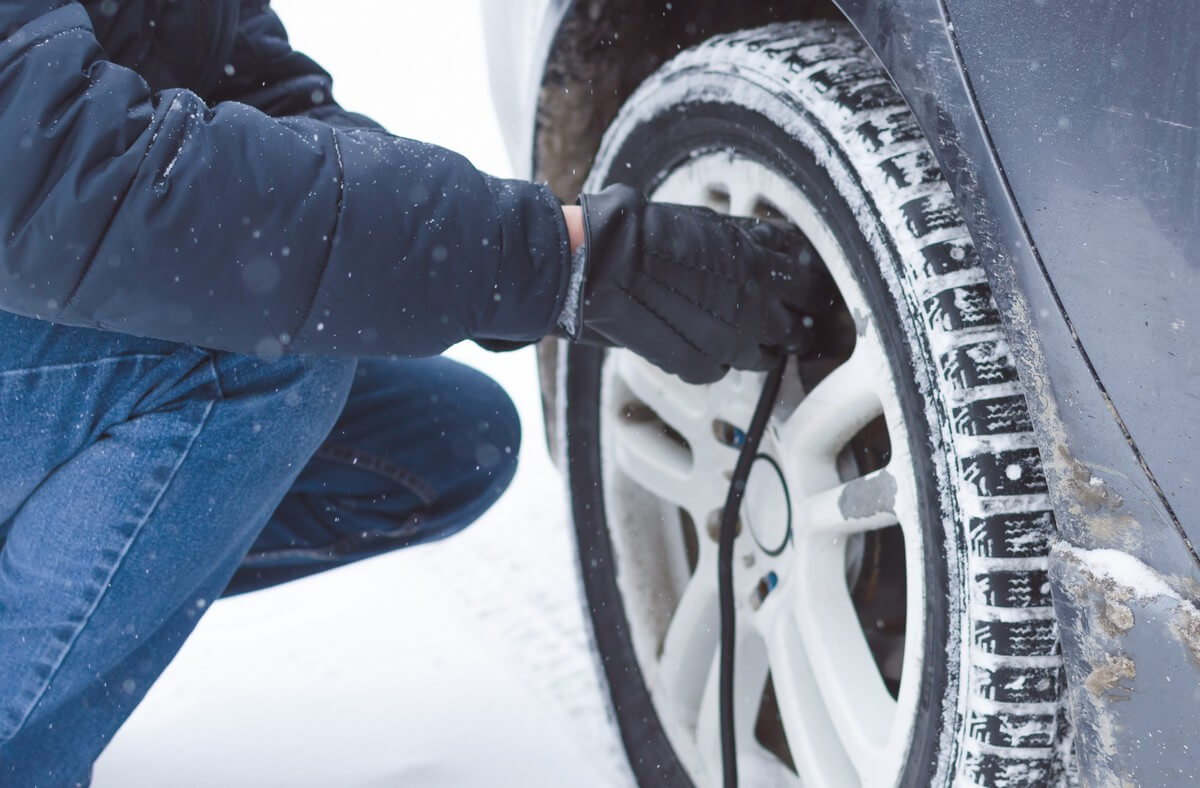
Slow Leak
Even on a correctly installed tire, air will still gradually escape at about a rate of 1-2 PSI per month. Why? Well, mostly because the only thing actually securing the tire to the wheel is air pressure — no gasket or seal there. As a result, even with a brand-new wheel, completely exempt from rust, and a brand-new tire, air will still be able to escape. Not much sure; only molecules by molecules, but still enough to slowly lower the air pressure inside a tire over a long period.
And once again, 1 PSI may not seem like much, but if you install your summer tires in May and never check or adjust the air pressure, in October, that would be a drop of 6 PSI. If you drive a regular Joe’s car, something like a Honda Accord or Toyota Camry (two of the most popular cars in the US for 2022), the recommended air pressure in your tires is probably 32 PSI. A drop of 6 PSI (18% of the total pressure) would bring your tires to 26PSI, which is more than enough to start seeing a negative impact on your car’s fuel efficiency, handling, and braking distance.
Moral of the story? Check the air pressure in your tires at least once a month — better safe than sorry.
Frequently Asked Questions (FAQs)
Why Is Tire Pressure Important?
Did you know that it’s the air pressure inside the tire, not the rubber itself, that supports the weight of your vehicle? Yep! Moreover, air pressure is also what gives your tires their shape, and make sure they sit evenly on the pavement. This one is quite self-explanatory, though — indeed, it’s fairly easy to understand that a flat tire, being flat, has a much larger footprint on the road and requires a lot more power to move. Not sure? Try pushing a car riding on 4 flats and you’ll see what I mean right away…
It’s no wonder, then, that tire pressure affects a variety of essential aspects of your vehicle’s performance, including driving experience, directional steadiness, turning and braking grip, and overall handling. Of course, running with tires at 30 PSI instead of 32 won’t make that much of a difference. However, it’s really a question of making inspecting and re-adjusting the air pressure in your tires part of your monthly routine. Sure, you can always skip a month and drive with 2 PSI less than recommended in your tires without a problem. Unfortunately, if for whatever reason you were to forget to check them the following month, and maybe the next too, it could quickly add up.
Checking your car or truck’s tire pressure every month is simply easier to keep track of and you’ll never have to worry about it anymore.
How Does Tire Pressure Impact Braking Distance?
Interestingly, both under and over-inflated tires increase braking distance and make your vehicle less responsive.
Indeed, under-inflated tires are wider but softer, creating some sort of “flex” between the wheel’s movement and the moment it’s transferred to the tire, which is especially risky when a sudden swerve or emergency brake is required to avoid a collision. On particularly soft tires, only the outer parts of the tread will be applied to the road, significantly increasing a vehicle’s braking distance.
On the other hand, over-inflated tires have a narrower surface in contact with the road, reducing grip and braking distance, while the extra pressure also makes them stiffer, increasing vibrations transferred to the suspension and steering components, and ultimately, the chassis.
In short, the manufacturer’s recommended pressure is your best option 99% of the time, assuming that your car rides on stock wheels and isn’t pulling a trailer or anything heavy. However, if I had to choose, I’d say that slightly over-inflated tires are still better than slightly under-inflated ones — but anything else would just be a bad idea.
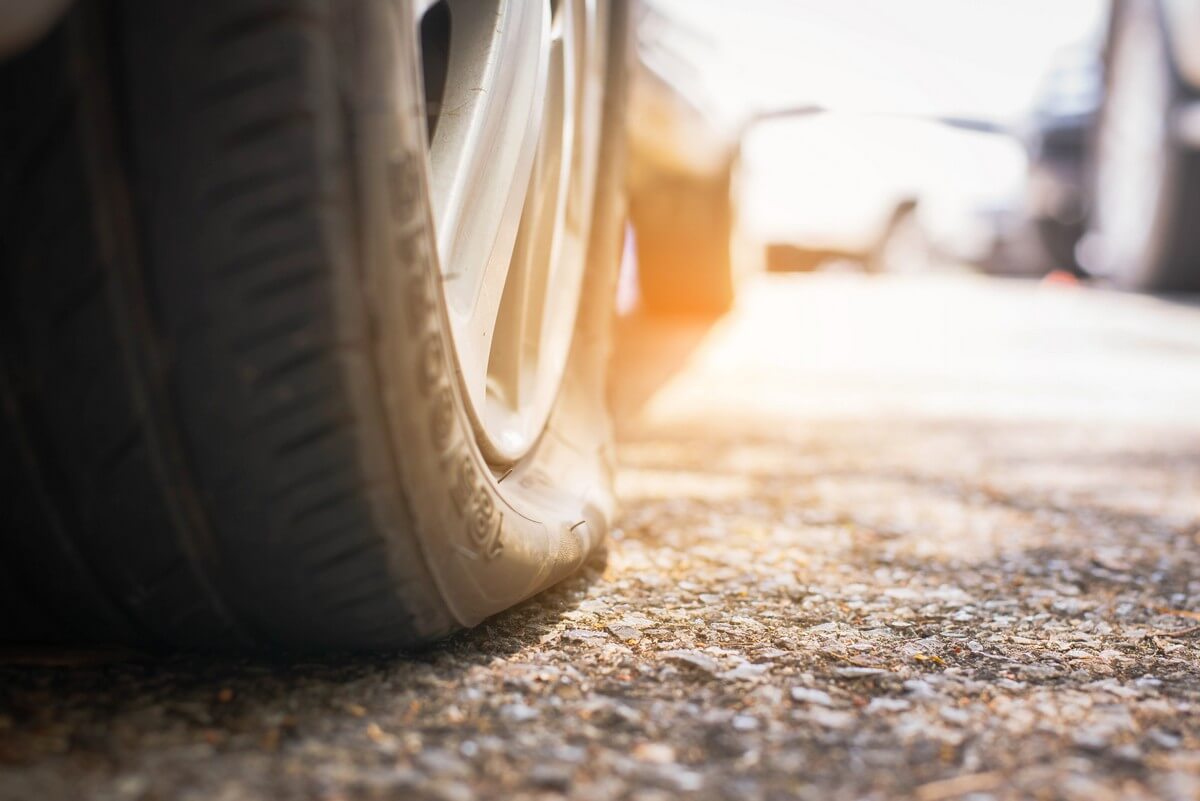
How Does Tire Pressure Affect Traction?
Just like for braking distance, improper tire pressure will also reduce traction. Excessive pressure will deform the tire’s contour, while a lack of air pressure will deform the center of the tread and the sidewalls. In both cases, the result is the same: a reduced footprint in contact with the road will result in lower traction.
However, it’s also important to mention that in very rare occasions, slightly lowering a tire’s air pressure may actually increase traction. Indeed, if you went off-roading with your truck and are now stuck on ice or in deep snow, letting some air out will increase the footprint and could actually help. The main concern with this one is that, while lowering the air pressure in your truck’s tires may help to get out of a ditch, it might be a problem once you get back on the road. For this reason, I would highly suggest getting your hands on one of those portable air compressors so you can inflate your tires back to specs after.
Similarly, if you are a racing fan, you might have noticed that some race cars seem to be driving on awfully soft tires, especially dragsters for instance. Still, in this specific case, it’s important to keep in mind that these cars will most likely do a huge burnout to prep their tires before the race. The idea here is that the air pressure will be optimal once the tires are heated up, instead of cold.
So unless you drive an off-roader running on 35s or a top-fuel dragster, you are probably better with whatever your car manufacturer recommends.
How Does Tire Pressure Affect Tread Wear?
As explained above, since a lack or excess of air in your tires will deform the surface in contact with the road, both will also cause them to wear out unevenly. With over-inflated tires, you’ll notice that the center of the tread will wear out much faster while aging signs will appear on the outside first with under-inflated ones.
In both cases, it’s not really a good thing. Tires are pricey, eh!
Last Words
No need to mention that monitoring your tires regularly is by far the best thing you can do to ensure the safety of your car, truck, or SUV — and, by consequence, the lives of your passengers and yourself. Driving on improperly inflated tires is simply never a good idea.
It will cost you more in fuel and in replacement tires, make your car harder to control, and increase its braking distance. And since checking and adjusting your tire pressure costs pretty much nothing (a basic tire gauge won’t cost you more than $20 and most repair shops will lend you an air hose for free), I’d highly recommend including it in your monthly car care routine.
To close this one, I’d simply like to remind you that when in doubt, it’s always better to have a look at your car or truck repair manual. You can’t really break or damage anything here but just in case — you’ll find every spec you need in there to make sure you do it right the first time.


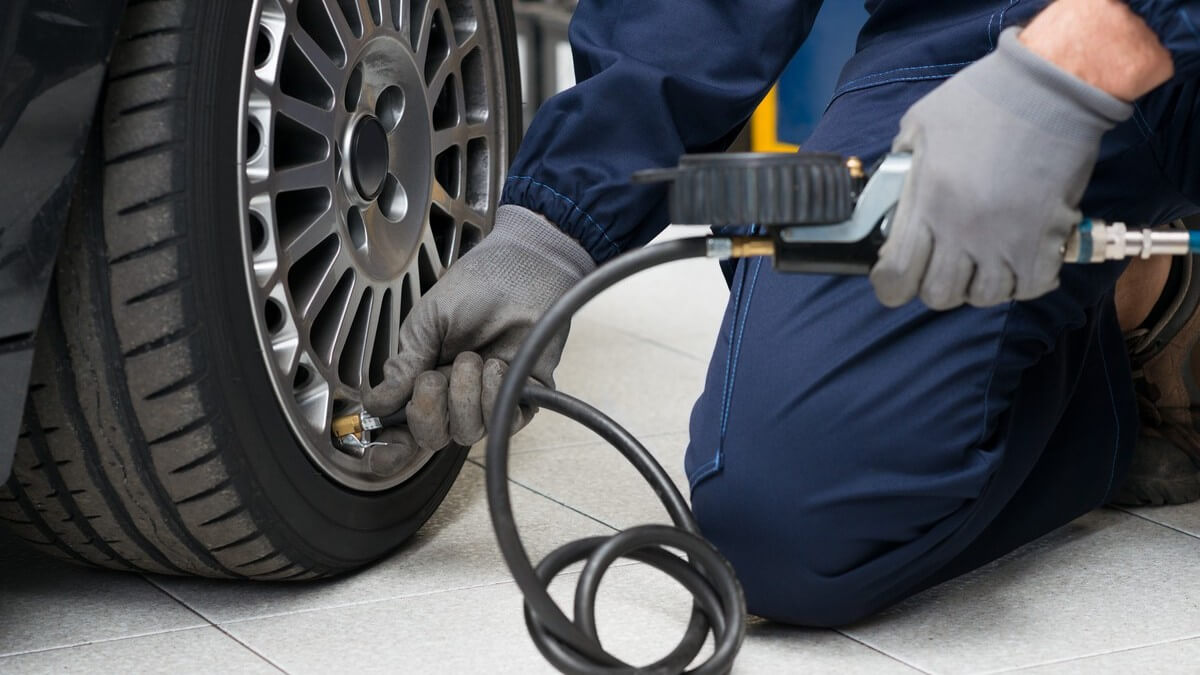
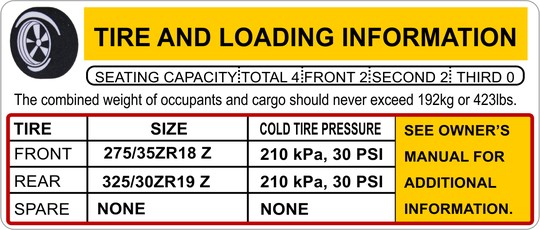
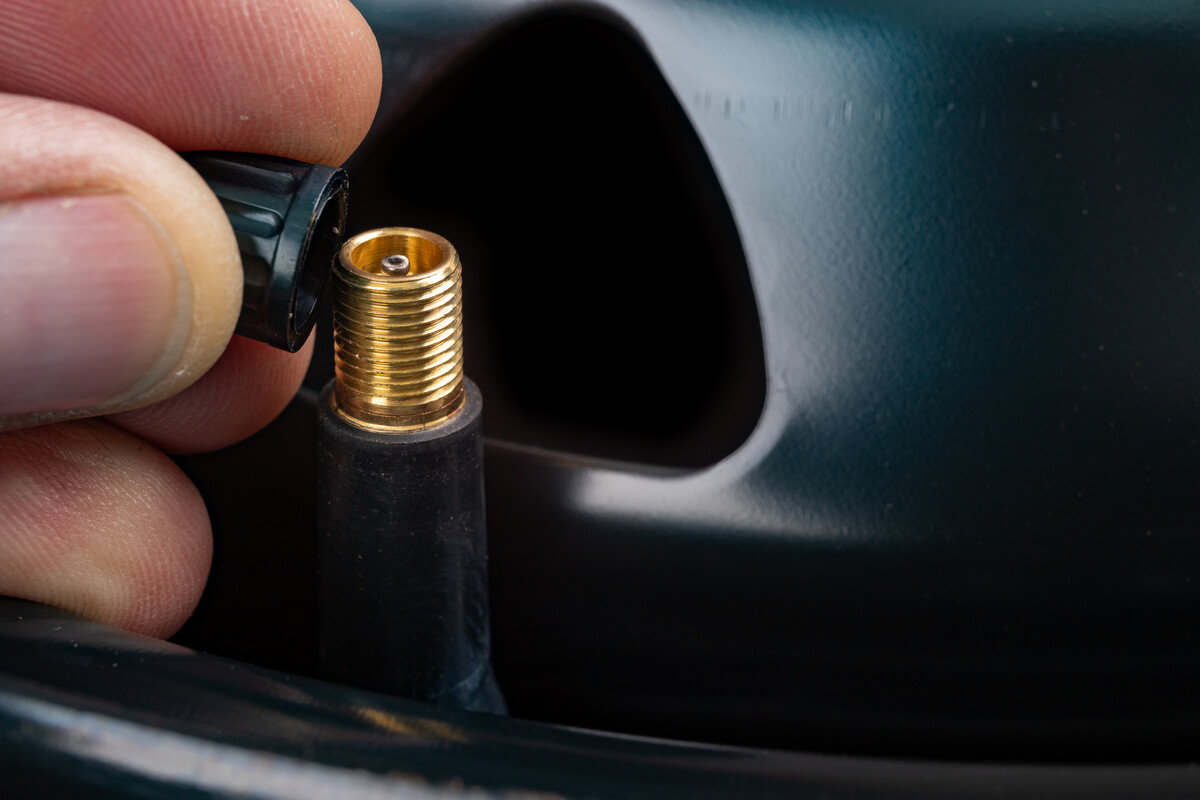





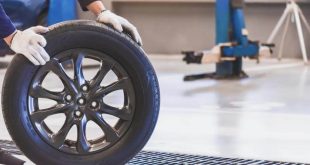
Does the air pressure change if you have installed a different size set of tires(larger)?
Hi!
The short answer is no; but the long answer is a bit more complicated than that — it really depends on your specific setup and what you’ll be using your vehicle for.
The manufacturer’s recommended tire pressure for your car depends on a wide range of factors but mostly on the weight of your vehicle and how much pressure is required for the tires to be able to support it while providing an optimal footprint on the ground and keeping fuel consumption as low as possible.
So as a general rule, if your car was running stock 195/65/15 tires and you now drive on 225/45/17, the tire pressure should remain pretty much the same. However, if you now ride on expensive new aftermarket rims, going for a slightly higher pressure could help prevent damage to your shiny new wheels when driving through potholes — just keep in mind that then, stiffer tires also increase the risk of damaging the tires instead but since they usually cost less than wheels, most people would prefer having to replace a tire than a wheel.
On the other hand, if you drive a pickup truck and basically changed your stock tires for massive off-road-oriented 40-inchers, then it would probably need to be widely different. While the weight of your truck is basically the same as it was before, since you’ll now be using it to crawl over rocks and trees, softer tires would be much better.
Still, don’t hesitate to reply and give us more details about your specific setup and we’ll be more than happy to help you out!